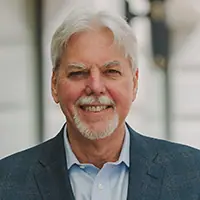
Conference Report: 2012 Audit Committee Conference
Now that the worst of the financial crisis is behind them, bank boards might think they can finally breathe a sigh of relief. Except that they can’t. More than 350 people attending the Bank Director Audit Committee Conference June 7-8 in Chicago learned about the new challenges facing audit committees this year-from new regulations regarding risk and compensation, to the struggle that many banks face trying to build capital and grow revenue and earnings in a difficult economic environment. Participants also received instruction on how to identify and root out large-scale internal fraud, one of the worst threats to the bank’s survival, as well as an update on trends in liability and insurance for bank directors.
“The conversation has shifted,” said Robert Fleetwood, a bank attorney with Barack Ferrazzano Kirschbaum & Nagelberg LLP in Chicago, who spoke at the conference. “Now, it’s more of a ‘thank God we survived.’ Once you can label yourself a survivor, you can think about the next three to five years.”
Several directors spoke at the conference about their challenges and solutions at a wide range of banks, from the Bank of Tennessee in Kingsport with just $650 million in assets to $20-billion asset SVB Financial Group in Santa Clara, California, which has offices in China, India and the United Kingdom.
Regulation and capital will be huge areas of concerns during the next few years, as most of the rules coming out of the Dodd-Frank Act haven’t been finalized yet. Plus, many banks still lack sufficient capital to acquire other institutions. Risk management will be an area of heightened focus for regulators and banks, the vast majority of which don’t have a separate risk committee. As part of that, even though stress testing is only required for banks above $10 billion in assets, the Federal Deposit Insurance Corp. this month published a guide to stress testing for community banks.
However, Pamela Martin, a senior supervisory financial analyst in the supervision division of the Federal Reserve, tried to calm worries at the conference about increased regulation and pressure to comply with rules designed only for the bigger banks.
“Dodd-Frank is really geared at the largest institutions and it’s not designed for community banks,” she said. “We have no intention of applying this to community banks, including stress tests.”
Speakers at the conference also talked about how to handle risk on the audit committee and ferret out fraud.
“If I served on a bank board, I would want to know that someone was serving as [the chief risk officer],” said James Shreiner, a senior executive vice president at Fulton Financial Corp, a $16.5-billion bank holding company based in Lancaster, Pennsylvania. “They might have 10 other jobs that they do but [banks] need to have someone who is responsible for risk and not have that be someone responsible for the revenue side.”
Knowing what the bank’s risks are, including the potential for fraud inside and outside the bank, is a particular focus for audit committee members.
“People are more willing to take a risk. Profits are down. Loans are down,” said Wynne Baker, the head of the banking practice at KraftCPAs in Nashville. “You want to be in business five years from now and so you want to make sure you have the right tone at the top.”

Join OUr Community
Bank Director’s annual Bank Services Membership Program combines Bank Director’s extensive online library of director training materials, conferences, our quarterly publication, and access to FinXTech Connect.
Become a Member
Our commitment to those leaders who believe a strong board makes a strong bank never wavers.



